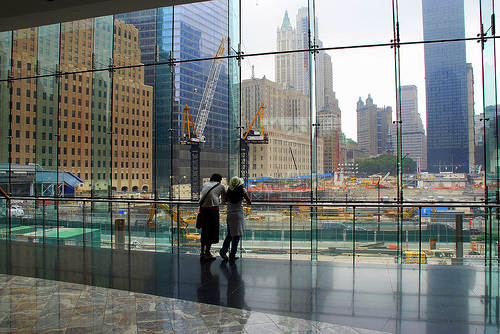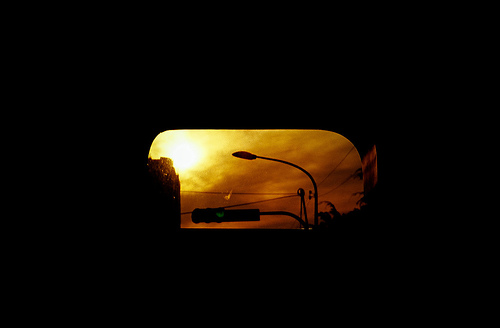When I first planned out this dark tourism series and decided to wrap it up with a summary piece, I made a note that this would cover moral issues and philosophical questions. Sounds deep. Now that I’m writing it, I’m heading more in the reality TV direction and calling it awards time instead. But the nature of the topic means we’ll probably get deep and meaningful along the way anyhow.
Vagabondish is reader-supported. When you buy through links on our site, we may earn a small affiliate commission. Read our disclosure.
I think it’s worth each of us considering how dark we are and what kind of dark tourism is personally acceptable and fits within our own value systems. In their 2007 Bluelist, guide book gurus Lonely Planet discussed the issue of dark tourism and most notably published a five-level Dark-O-Meter so you could gauge just how dark your traveling intentions were. At the time it amused me, but I couldn’t agree with it, as visiting the concentration camp remains at Auschwitz apparently put me in the “Pitch Black” category, the fourth strongest on the list. Still, I was happy to have avoided being labeled “Too Dark”, which involved visiting catastrophe sites before they were ready for visitors or (imagine this) traveling to witness public hangings or other executions. How dark are you and your travels? Think about it while I end the dark tourism series with a classic round-up: awards time.

Ground Zero, Manhattan © doolittle1989
The Most Commonly Practiced Dark Tourism
The continuum of dark tourism is broad: there are some destinations that nearly everybody would agree are somehow wrong to visit. But at the other end of the scale, not many would consider visiting a war memorial to be dark. That’s why I’m awarding grief tourism the medal for being the kind of dark tourism that we most commonly find ourselves involved in. Especially when the passage of time has dulled the grief a little, I don’t see any problem with visiting places like war memorials or war grave sites, concentration camps or cemeteries, as long as you go there with an attitude of appropriate respect and honor.
Dark Tourism With the Most Potential for Good
Despite having a pretty catastrophic sounding name, I see disaster tourism as the kind of dark tourism that has the most potential to bring about positive change for the destinations affected. Whether you headed to Asia after the 2004 tsunami, or tried to help out after the devastation of Hurricane Katrina, if you provide your assistance in a valuable and appropriate way, then I can’t see too much wrong with that. If, on the other hand, tourists hear of some stunning natural disaster and hop on a plane so they can go and get some amazing pictures, that’s definitely wrong. But handled well, disaster tourism can provide both practical, economic and emotional benefits to a community rebuilding itself after a disaster.
Dark Tourism With the Most Potential for Bad
At the moment, doomsday tourism is really just getting started. I’m not yet aware of any travel operators directly marketing tours to places like the Galápagos Islands or Antarctica as “see it quick before global warming destroys it” trips, and I hope that I never will. But the rumors are there that travel agents are using these kinds of strategies to sell trips to endangered areas, and there’s also an element of human nature involved where people selfishly don’t want to be the ones to miss out on seeing, for example, the Great Barrier Reef before all the coral is bleached. Unfortunately, all this will have a nasty compounding effect. The nearer a site is to destruction, the more people will want to go there, and the quicker it will be destroyed. That’s why doomsday tourism really bothers me, and has even caused me to reconsider ever visiting the Galápagos Islands, which used to sit high atop my list of things to do in the future.
The Most Cringe-Worthy Dark Tourism
There’s one type of dark tourism that I’ve never yet taken part in, and I’m not sure I ever will: poverty tourism. Taking a trip with the sole intent of seeing how the other half live – when that half is the seriously poorer half – just really makes me cringe. Some will argue that seeing poverty, such as in Rio’s favelas or Mumbai’s slums, will increase awareness and encourage the haves to help the have-nots. I don’t buy it. I know I’m a have, and I already try to help the have-nots. There are organizations who specialize in helping the have-nots. They’re the experts, and I’d rather give my money to them so that they can help in the best way possible, rather than hopping on a bus and ogling at some woman who doesn’t have enough money for food. We’re all humans, and some of us are luckier than others, but I don’t want to flaunt that.

Tunnel Exit, Taiwan © *Solar ikon*
The Darkest Kind of Dark Tourism
To my mind there’s a very clear winner here: suicide tourism. This topic was not only difficult to write about, but actually made me think twice about heading to some tourist icons again in the future. I’ll never think of the Golden Gate Bridge in the same way knowing that a couple of thousand people have ended their lives there. And if you want to talk about moral issues: is it fair for a would-be suicide victim to choose to die far from their home, making it all the more complicated for those who find them, and especially at a place that for millions of others is part of a vacation or sightseeing tour? I’m sorry, but that to me seems especially selfish.
So that ends the awards ceremony for dark tourism. I’m keen to hear what readers think about the various kinds of dark tourism. It’s a very personal issue, with a thousand possible opinions. How dark are you? What would you or wouldn’t you do? I’d love to hear your thoughts in the comments section.


